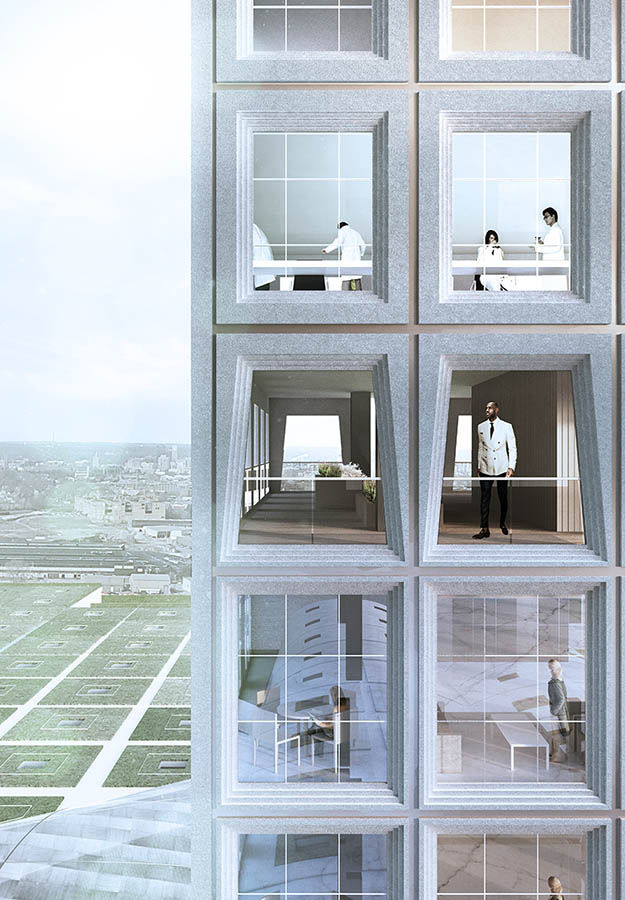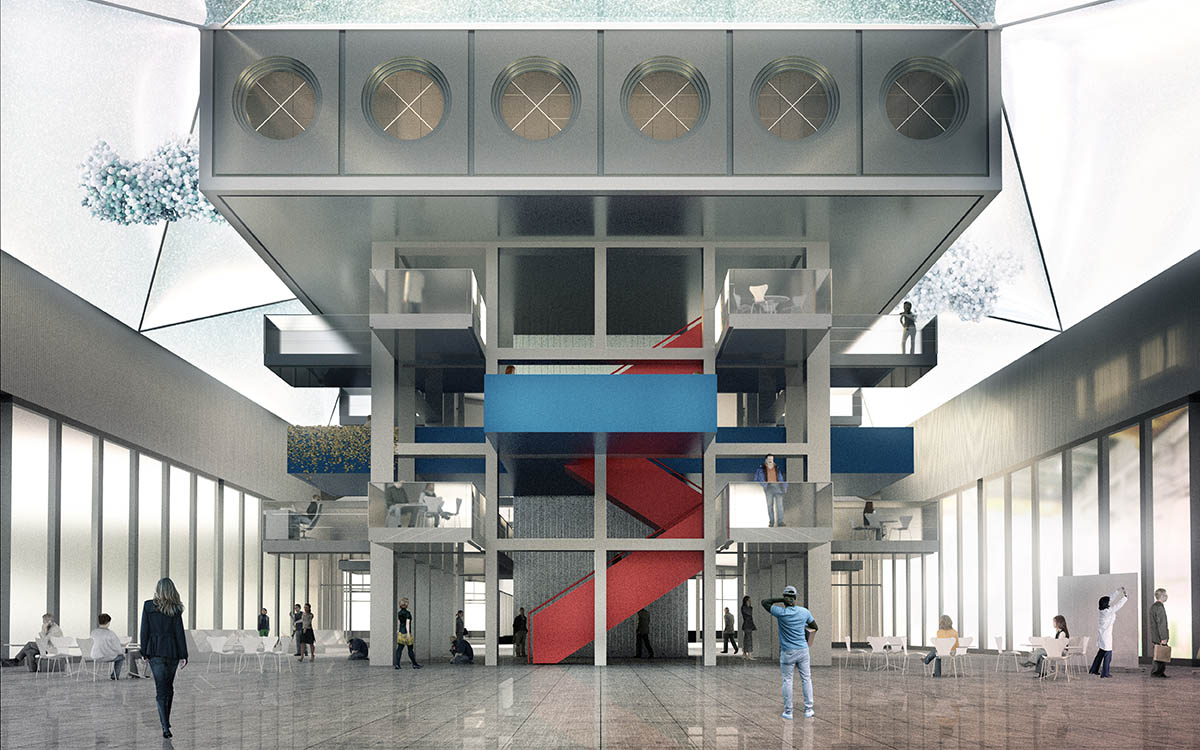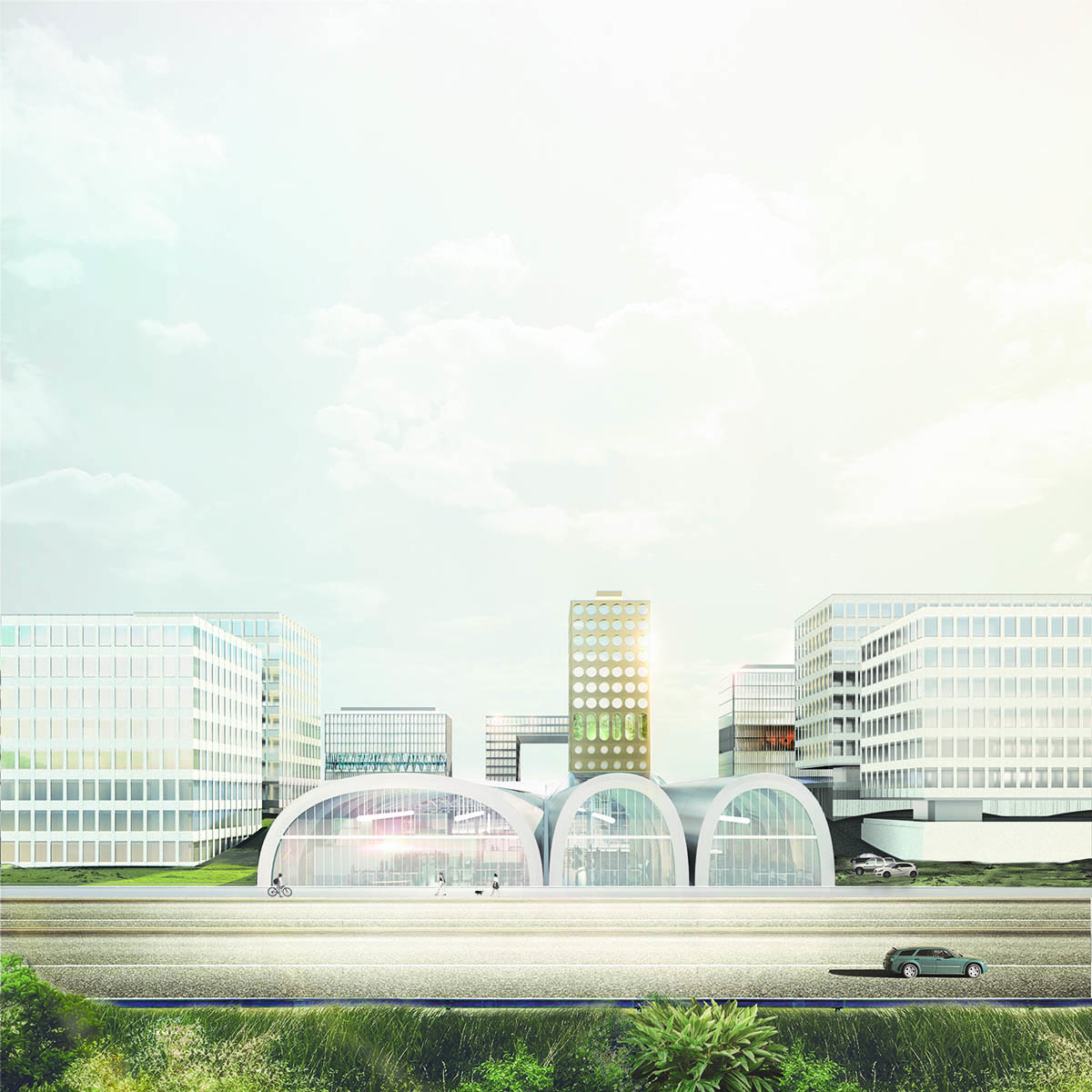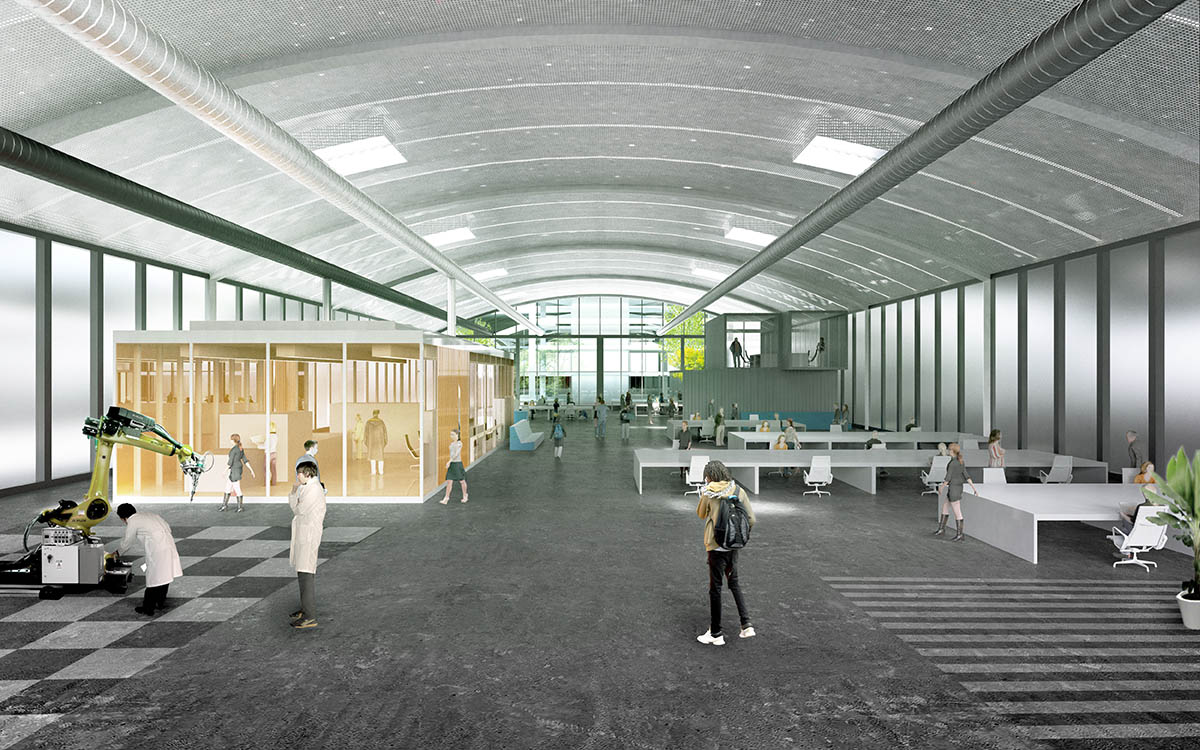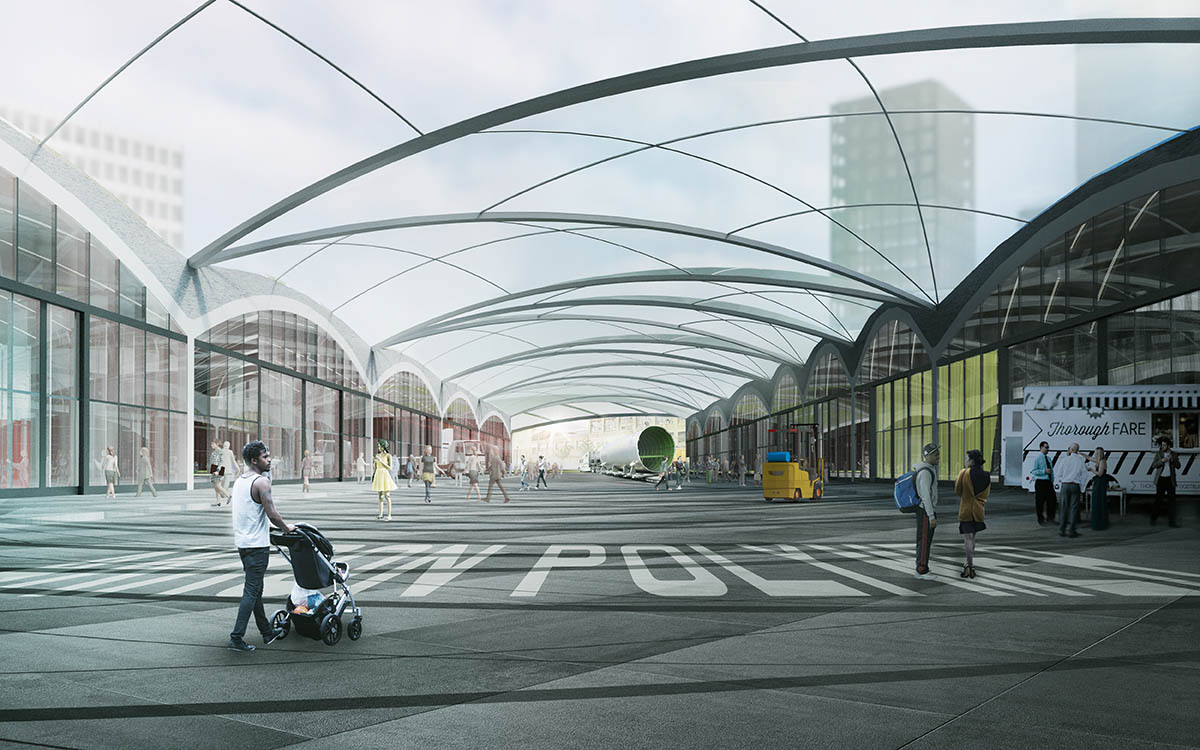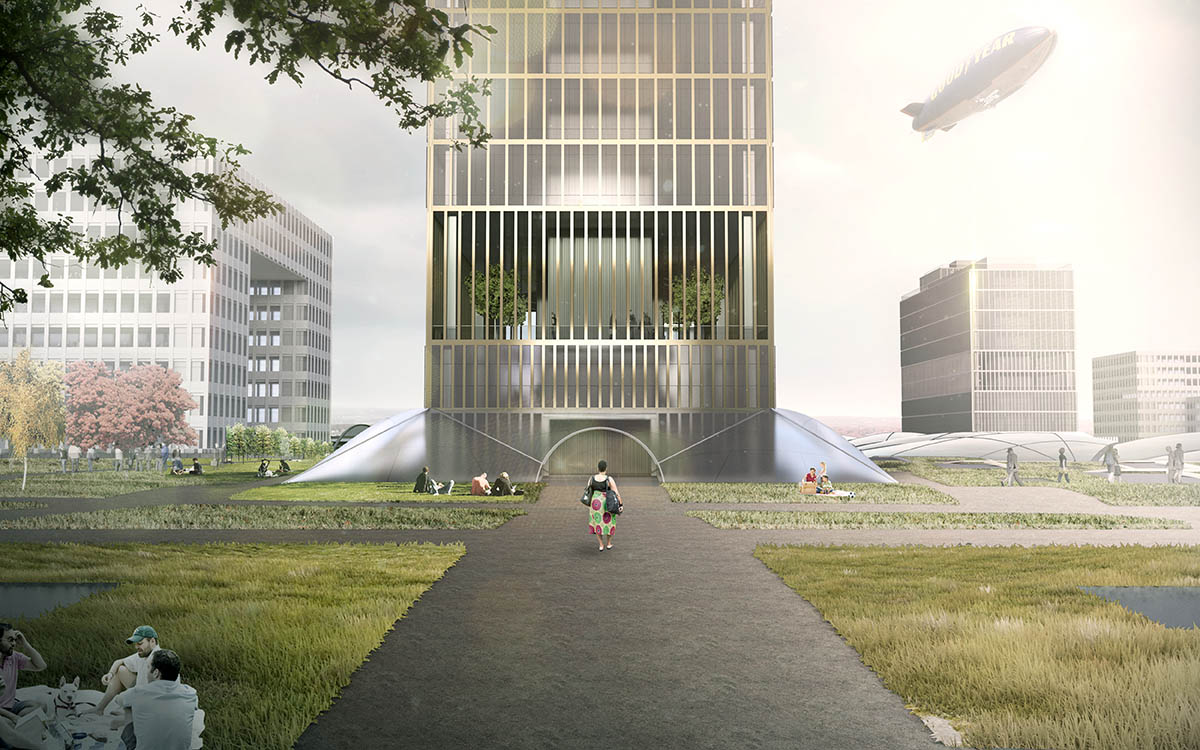From Pipeline to Platform: Imagining Innovation in the Rust Belt
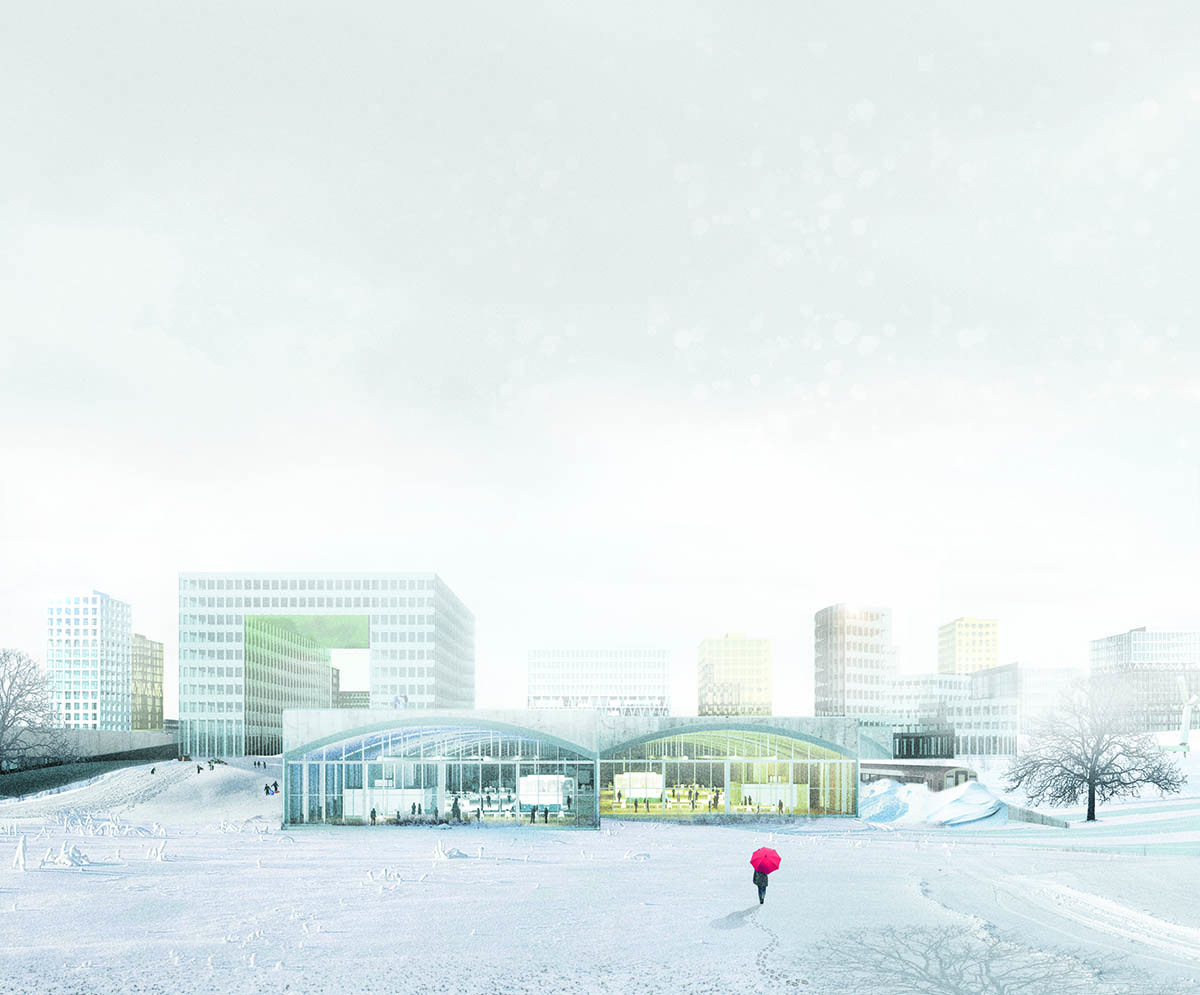
by Alex Yuen (MAUD ’18) — Recipient of Urban Planning and Design Thesis Prize in Urban Design
How do we build upon our economic successes while ensuring that no community is left behind? The project brings together two major contemporary urban phenomena that are not exclusive to the United States, but nevertheless extremely influential in modern American society. The first is the development of areas known as Rust Belts; former industrial centers that have undergone gradual economic decline associated with shifting market trends and manufacturing processes. The second phenomenon is the emergence of Innovation Centers, where economies are driven not by the physical output of material, but rather by the development and accumulation of knowledge. Within the American context, these two conditions come to exemplify two extremes of economic viability and success.
A new development for innovation is proposed within the city of Akron, Ohio. With a rich history tire and rubber manufacturing, Akron’s urban genesis was originally tied to manufacturing and innovation. As one of the fastest growing cities in the country in the 1920’s, Akron epitomized the early connection between urbanization and innovation. After decades of industrial decline, the city has recently developed an eco-system of innovation in polymer research and development that includes over two thousand related companies located in the area and Akron is widely considered to be the polymer capital of the world.
This thesis asserts that innovation should, once again, be urban. The project imagines a new habitat for this ecosystem while simultaneously proposing a refreshed model for the North American innovation campus that rethinks pressing issues of openness, flexibility, sustainability, and relationship to its physical and social context.
The design project posits that neither the isolated headquarter campus nor acupunctural situated incubator can adequately resolve the spacial or contextual requirements of the modern innovation hub or the cities that are home to them. Rather, a new development for innovation in the Rust Belt takes advantage of the available land, but also emphasizes certain concentrated densities. The project is a necessary hybrid, accommodating the social interaction that is promoted by the mat, but allowing for the accumulation of vertical programmatic specificity.
The mat elements, or platform, support a sense of industrial flaneur, where innovators and creators are encouraged to move throughout the different labs and production facilities. Imagined as a collection of spaces that aggregate due to the economic and research advantages of clustering, these elements utilize one of the most resilient industrial types, and Akron staple, the hangar, for its structural and financial efficiency.
Established upon the platform is a second ground which remediates the current brownfield site into a public free space. Towers and slabs emerge from the platform, providing space for both isolated research to occur as well as housing for a floating population of locals and new arrivals, simultaneously refreshing and strengthening Akron’s wavering real estate market. Wary of potential aesthetic obsolescence, the project maintains a balance between landscape and strategically implemented built form that establishes a discernable image of urbanity for the polymer industry and Akron at large.

